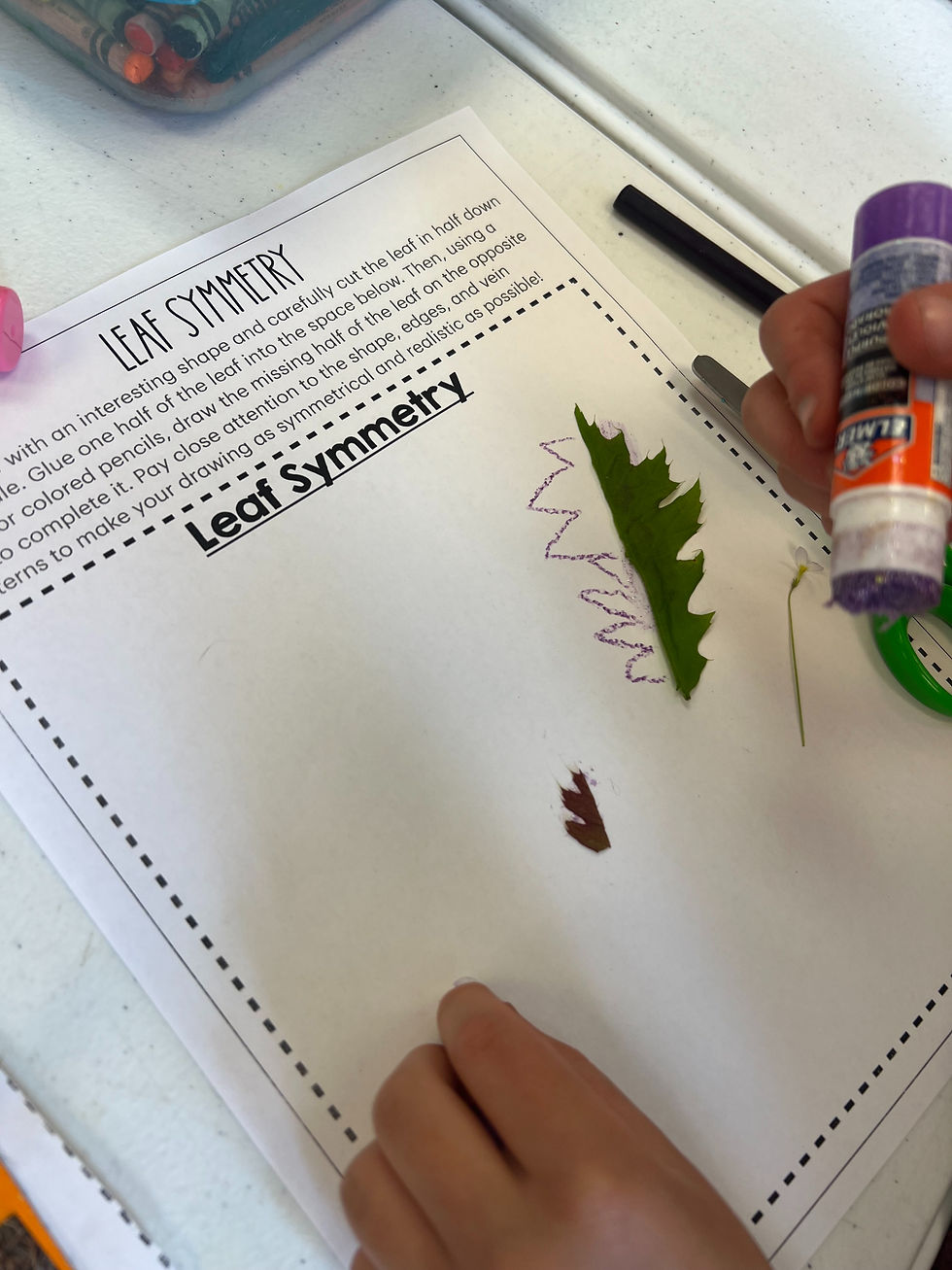10 Ways to Bring Nature into the Classroom
- paperandpines
- Jun 8
- 3 min read
Some days it feels hard to compete with the screens, but kids still crave connection—to each other, to themselves, and especially to the natural world. But what if you don’t have access to a garden or nearby nature trails? Good news: nature doesn’t need to be far away. It can be right inside your classroom or your home.
Here are 10 ways to bring the outdoors in—no permission slips required!
1. Create a Nature Classroom Table
Designate a small area in your classroom or home for natural treasures kids have collected: rocks, feathers, leaves, pinecones, interesting seeds, or even shells. Rotate the items seasonally and label them with facts, student observations, or questions for kids to explore.
Extension idea: Add magnifying glasses and field guides for hands-on investigation.
2. Add Indoor Plants
Plants clean the air, boost mood, and make a space feel alive. Start with low-maintenance greenery like pothos, spider plants, or succulents. Involve students in watering and care routines—it’s a built-in responsibility lesson!
For a fun twist, name each plant and assign weekly “plant monitors.”
3. Incorporate Nature Journaling
Whether you're inside or outside, nature journaling builds observation skills and curiosity. Have students sketch, write, or chart what they see, smell, hear, and wonder about. Even a leaf taped to a journal page becomes a learning opportunity!
This one is perfect for science units, descriptive writing practice, or quiet morning work.
4. Use Natural Materials for Math
Skip the worksheets—bring in sticks, acorns, stones, or leaves for counting, sorting, graphing, and patterning. Nature makes math tactile, visual, and way more fun.
Leaves are also a great way to practice symmetry! Cut a leaf in half, glue it to paper, and have kids draw the other side as close to symmetrical as they can.

5. Hang a Weather Window
Design a dedicated “weather corner” where students can track temperature, clouds, wind, and precipitation. You can level this up or down based on age, and include tools like a thermometer or rain gauge just outside your window (or even simulated versions indoors).
6. Bring in Nature Sounds
Play soft nature sounds—birdsong, rainfall, ocean waves—during transitions, creative writing time, or mindfulness moments. It helps students regulate energy levels and reconnect with calm.
7. Make Art with Natural Materials
Use leaves for printmaking, flowers for color mixing, or twigs and bark as painting tools. Nature-based art teaches resourcefulness and helps students see beauty in unexpected places.
8. Grow Something Together
Even if it’s just a bean sprout in a paper towel, watching something grow is powerful. Grow herbs on a sunny windowsill, plant wildflowers in recycled containers, or start a seed-to-salad project.

9. Use Nature-Themed Read-Alouds
Books like The Curious Garden, Over and Under the Pond, or Miss Rumphius can spark rich discussions about ecosystems, sustainability, and wonder. Let nature inspire your literacy choices!
Think seasonal with nature-based picture books or poems that reflect the time of year.
10. Turn Recess into a Mini Nature Walk
Even a paved playground offers nature if you know where to look. Invite students to notice birds, clouds, insects, or plants. Give them a focus: “Find three living things” or “Observe one change since yesterday.”
Journal or draw findings back in the classroom.
You don’t need a forest outside your door to help students fall in love with nature. Just start with what you have, and help them see that the natural world is already a part of their everyday lives!






Comments